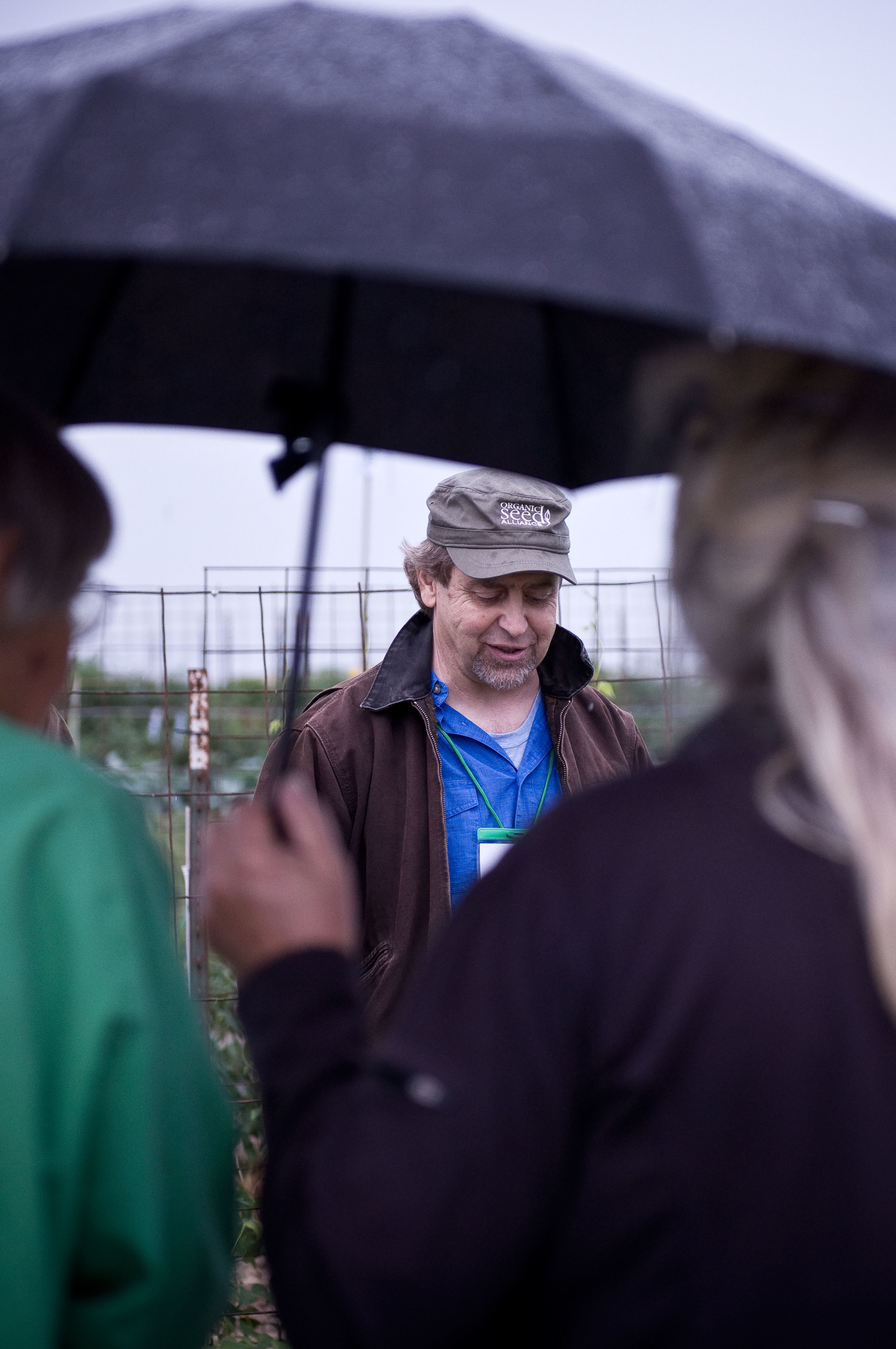Debunking the Hybrid Myth
/At the Seed Savers Exchange Conference this summer, Dr. John Navazio 's talk, "Debunking the Hybrid Myth," laid out the hybrid vs. open-pollinated argument. Here's a peek at John's speech, the whole speech is available here. Also, check out Dr. Navazio's new book, The Organic Seed Grower, due out in December.

Why are hybrids favored?
- Once the parental inbreds are fixed it is easy to make the hybrids year after year. You have two parental types and you cross them.
- You can maintain those two homogeneous, very uniform parental types, and every time you want to make some new hybrid seed just plant it out in the field, detassle one, and let the other one make pollen. They’ve been inbred so much they’re very easy to maintain, unlike OP’s that have all that variation. You're seed savers, you’ve seen it, right? Once you've inbred them you’ve basically made it so genetically narrow that you’ll see that the variation is gone. Two uniform parents make a uniform hybrid.
- Companies liked it because hybrids allowed instant proprietary ownership. If you maintained your own inbreds and didn’t give it to anybody else you were the only one that could make that ‘Copper Cross’ hybrid and sell it. Whereas, previously, if you were Ferry Morse and released ‘Detroit Dark Red’ in 1902, within three years every home garden, farmer, and seed company in America had ‘Detroit Dark Red.’ Owners of seed companies loved this little trick, this little wizardry, and the breeders liked it because of the stacking of traits it is actually easier to breed hybrids.
What are the disadvantages of hybrids?
- Inbred lines are genetically narrow and have less adaptation over time than many OP's. That’s why so many of them died from inbreeding depression. You reveal these deleterious traits and narrow their genetic base so much that they’re not adapting and evolving like our older varieties were at the hands of the humans who kept them. In fact, in studies of inbred lines they found that the best inbred lines tend to have less of McClintock’s transposable elements which meant they stayed stable much easier and are the reason the companies loved them so much. It’s anti-evolutionary.
- Hybrids are weaklings. When you grow inbred seed, and I worked at a company where I grew inbred seed, you have to pour on the chemicals, use more water, more fertility, you really do have to baby them. They are prima donnas.
- F1’s focus is often not on the best traits. They’re really focused on the traits that are good for the centralized systems, where we do high input agriculture. It’s the wedding of modern reductionist science and high input, high output. That’s not the way Mother Nature normally works. Vandana Shiva talks about how the focus of science has been reductionist, and it’s all about how can we figure out the input to get exactly what we need to get the right output. At that point you are taking a lot of nature out of the system and the new variation that gives us all of the diversity that we honor so much here today just doesn’t show up as much.
- When you save seed from the hybrids, they don’t breed true, and when varieties are dropped they are gone! You don’t save seed from hybrids, although there’s always an exception to the rule.
- Seed growing has become very centralized and very specialized. A hundred years ago all farmers had knowledge of how to grow seed for most of their top line crops. If you want to talk about loss of diversity, we have lost the people who know how to grow seed. This is as tragic as losing the genetic variation itself.
What are the advantages of open-pollinated varieties?
- They carry variability, and this results in genetic resilience.
- OP varieties can be bred to be tough in all stages. We can select for that in all stages. You can do that with hybrids too, but it’s easier if you have that built in resilience.
- They can be very regionally adapted and continue or always will be adapting year in and year out. We need things like that right now, we’re going through this climate chaos, and so is everyone that I speak to all over the country.
- When you save seed they do breed true, if you followed your isolation, of course.
- Varieties are not lost due to a business decision. Many of the farmers I work with actually went back to OPs' because they were sick and tired of seed companies dropping hybrid varieties that they’d actually come to know and love and learn to cater their system too. All of the sudden it is gone one day.
What are the disadvantages of OP’s?
- They are genetically variable, and not always consistent. I don’t know if any of you get frustrated on the garden scale of not getting as much uniformity as perhaps you would like - some cabbage plants don’t really make a head or something like that. But we can also take advantage of this if we do our selection and upkeep, and learn how to foster that adaptation.
- They are harder to maintain. I can attest to that having bred both hybrid and OP's. It’s much harder to breed something that’s genetically resilient, while keeping in enough variability to keep it strong, and enough selection to make it uniform. It’s a real paradox, how will I get a uniform enough variety but keep the variability?
- How do seed companies keep varieties exclusive? If we’re just growing OP’s anyone can go and grow it. That’s a biggie. And the question that I ask all the seed growers I work with is, "What is the incentive for you to proceed if there is no business incentive?"














